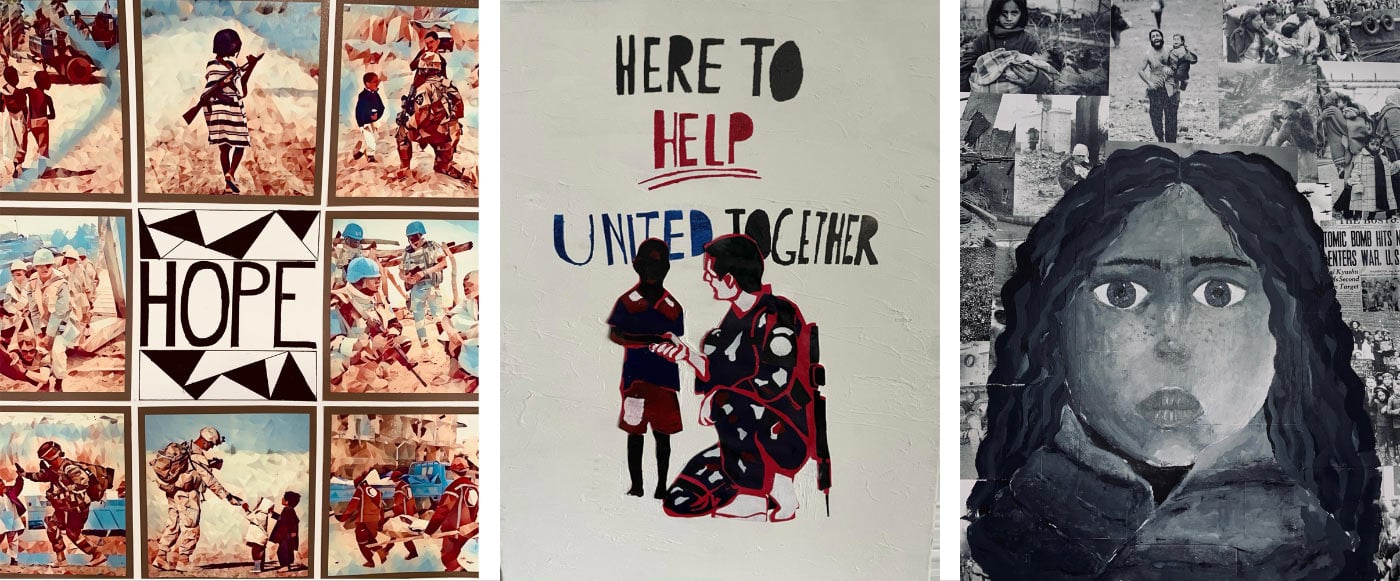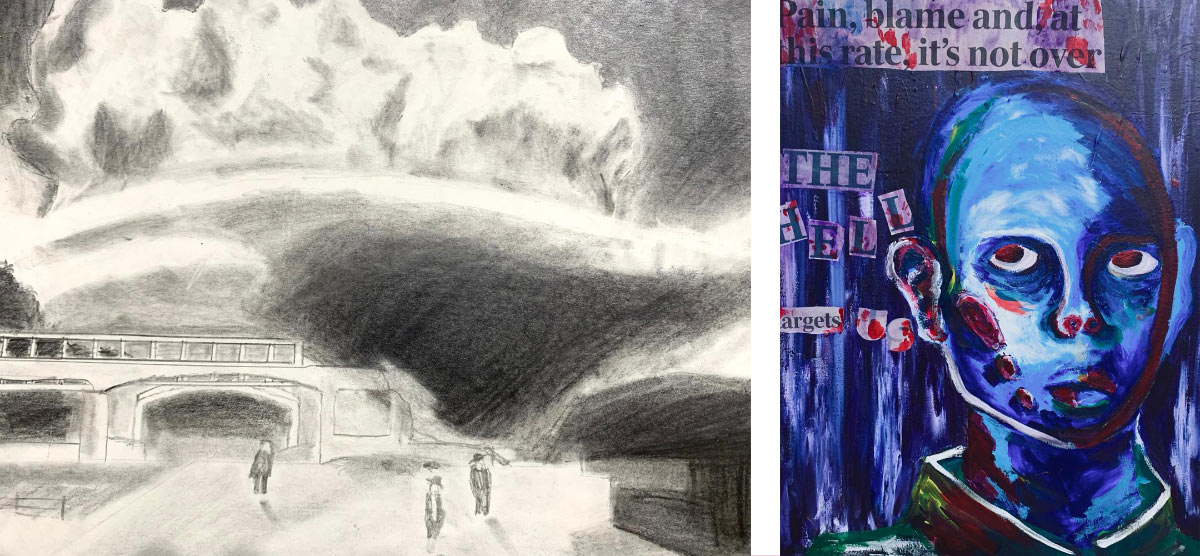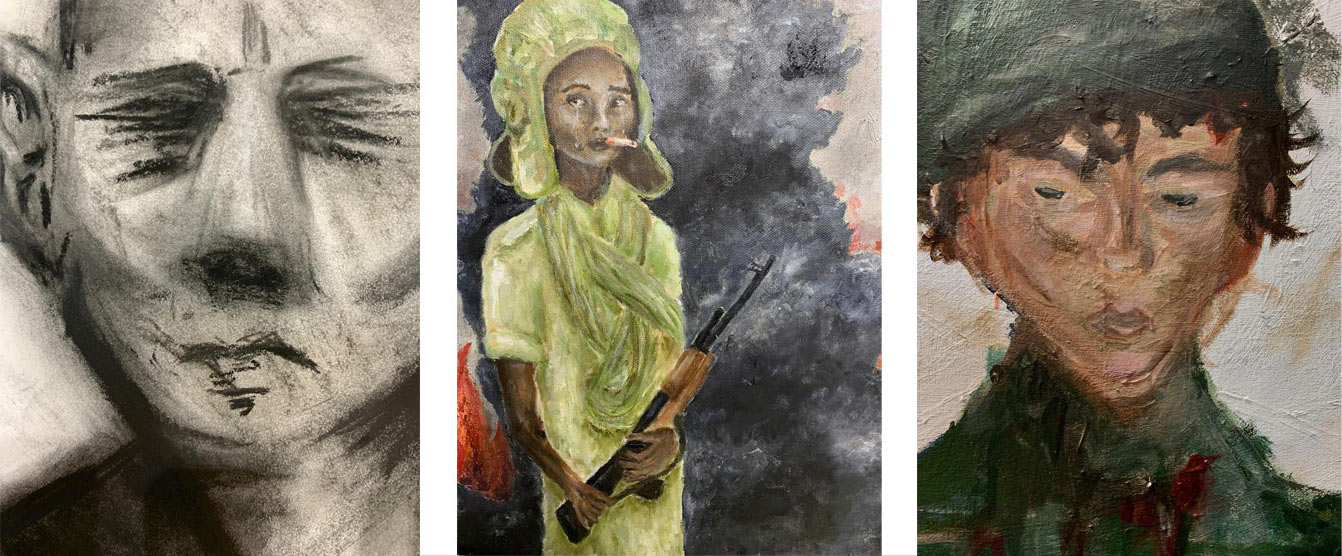Students, art and the laws of war
Art has the incredible potential to raise awareness of issues facing humanity.

By Kirsten Keith
Kirsten is a member of the Australian Red Cross NSW International Humanitarian Law Advisory Committee.
Art is used to depict the horrors of war, Picasso’s Guernica (1937) being one of the world's most famous examples. Picasso’s mural-sized artwork, a powerful indictment against war, was painted in response to killing of vast numbers of civilians during the aerial bombardment of the village of Guernica in northern Spain.
Art also provides a means for social activism and protest, with artists such as Basquiat and Banksy highlighting issues of police brutality, racism, capitalism and conflict. And it was recently used by artist Marwa Charmand in the recent Red Cross War in Cities exhibition to show the human face of armed conflict, the devastation caused to lives impacted by urban warfare.
Recognising this incredible potential for art to foster awareness of issues facing humanity, Australian Red Cross partnered with Oxley College in the Southern Highlands of NSW to raise awareness of armed conflict and the laws of war that bring humanity to such situations; to promote an understanding that even wars have laws.

International humanitarian law (IHL), also known as the laws of war, protects those who are not or who are no longer participating in hostilities and limits the means and methods of warfare. It means that civilians, the sick and wounded, medical and humanitarian personnel and facilities and prisoners of war must be respected and protected.
Exposure to global conflicts covered in the media, and curious minds grappling with questions such as the targeting of certain locations, create important opportunities for engaging and informing high school students about these important concepts.
The partnership – the IHL Visual Art Project – was the result of the efforts of Matthew Bentham, head of the art department at Oxley, and Kirsten Keith, IHL and international criminal law expert and long-time volunteer of Australian Red Cross. Aimed at year 9 students, the project sought to use visual art to raise awareness of the key principles of IHL and promote an understanding that even wars have laws.

Each student created a unique artwork that considered some aspect of the laws of war. Their art developed not only as a result of their own thoughtfulness and creativity, but also as a result of kind and expert guidance by Ben Quilty. Ben, an official war artist in Afghanistan, shared his experience and how art can be created in response to armed conflict. The students were also supported by Kirsten to learn about the laws of war, their history and core principles, such as proportionality, distinction and military necessity.

This project highlights the need to include youth in the dissemination of the laws of war and the education of issues confronting humanity. As digital citizens faced with a barrage of (mis)information concerning conflicts, it’s important that they are also equipped with an understanding that there are limits to such conflicts, that even wars have laws. They are, after all, tomorrow’s decision makers and future leaders.

Australian Red Cross thanks Kirsten Keith for her incredible efforts supporting the development of this project. We also thank Oxley College for the opportunity to work with the staff and students, and for enabling students to engage with difficult IHL concepts while producing some amazing artwork.
Charity donations of $2 or more to Australian Red Cross may be tax deductible in Australia. Site protected by Google Invisible reCAPTCHA. © Australian Red Cross 2024. ABN 50 169 561 394